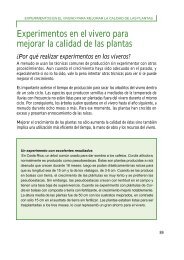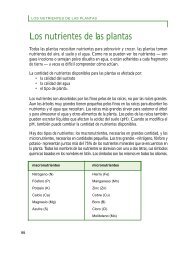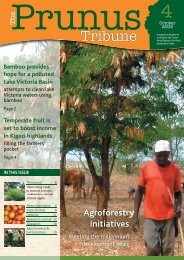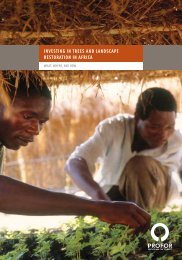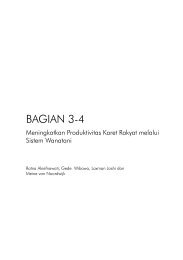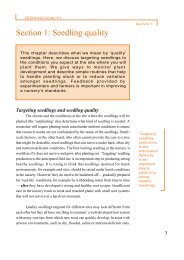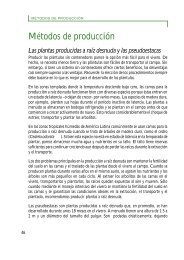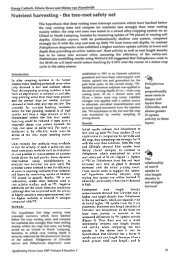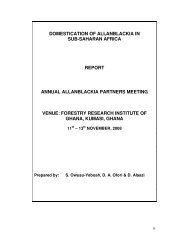Section 5: Nursery and plant hygiene - World Agroforestry Centre
Section 5: Nursery and plant hygiene - World Agroforestry Centre
Section 5: Nursery and plant hygiene - World Agroforestry Centre
Create successful ePaper yourself
Turn your PDF publications into a flip-book with our unique Google optimized e-Paper software.
NURSERY AND PLANT HYGIENEis highly toxic to humans <strong>and</strong> it destroys the earth’s ozone layer. It is scheduledto be banned worldwide, although this ban will not be effective in most countriesuntil 2010. We therefore strongly discourage the use of methyl bromide.Environmentally safer options are sterilization (correctly called ‘pasteurization’because it is not a complete process) with either hot steam or sunlight(‘solarization’), or selective treatments with herbicides or fungicides ifnecessary.Substrates that have been manufactured using high temperatures, suchas vermiculite or perlite, do not need to be sterilized unless they are recycled.For storage of sterilized substrates, use only clean <strong>and</strong> disinfected containers.<strong>Section</strong> 5For storageof sterilizedsubstrates,use onlyclean <strong>and</strong>disinfectedcontainers.Soil pasteurization treatmentssteam pasteurizationSoil sterilization with aerated steam is preferred tofumigation with chemicals. However, steam is not selective<strong>and</strong> kills beneficial organisms as well as pathogens.Specialized equipment for steam pasteurization is notalways available. A practical <strong>and</strong> simple alternative can bemade using a clean oil drum: insert a strong mesh or grid atabout 1/3 its height from the bottom, for example by weldingiron rods at close spacing. Put the drum onto stone feet, fillwith water up to the grid <strong>and</strong> place the substrate in sacks ontop of the grid. Cover the drum, light a fire under the drum<strong>and</strong> keep burning for 2–4 hours. Ensure that thetemperature of the substrate reaches 60°C for 30 minutes.This will kill most <strong>plant</strong> pathogenic fungi <strong>and</strong> bacteria, aswell as nematodes, but only a few viruses, <strong>plant</strong> insects orweed seeds. If you need a more complete treatment, raisethe temperature to 80°C <strong>and</strong> hold this for 30 minutes.However, at this temperature, so many beneficial organismswill be killed that this may lead to an explosive recolonizationof the substrate with pathogens.solarizationSolarization can be carried out in any nursery. Cover moist soil with transparentpolyethylene sheets <strong>and</strong> weigh them down with rocks. On sunny days, the temperatureunder the plastic sheet will reach 70°C or more. However, this pasteurization affectsonly the first few centimetres of soil <strong>and</strong> under cloudy conditions it can take severalweeks for a successful treatment.59






